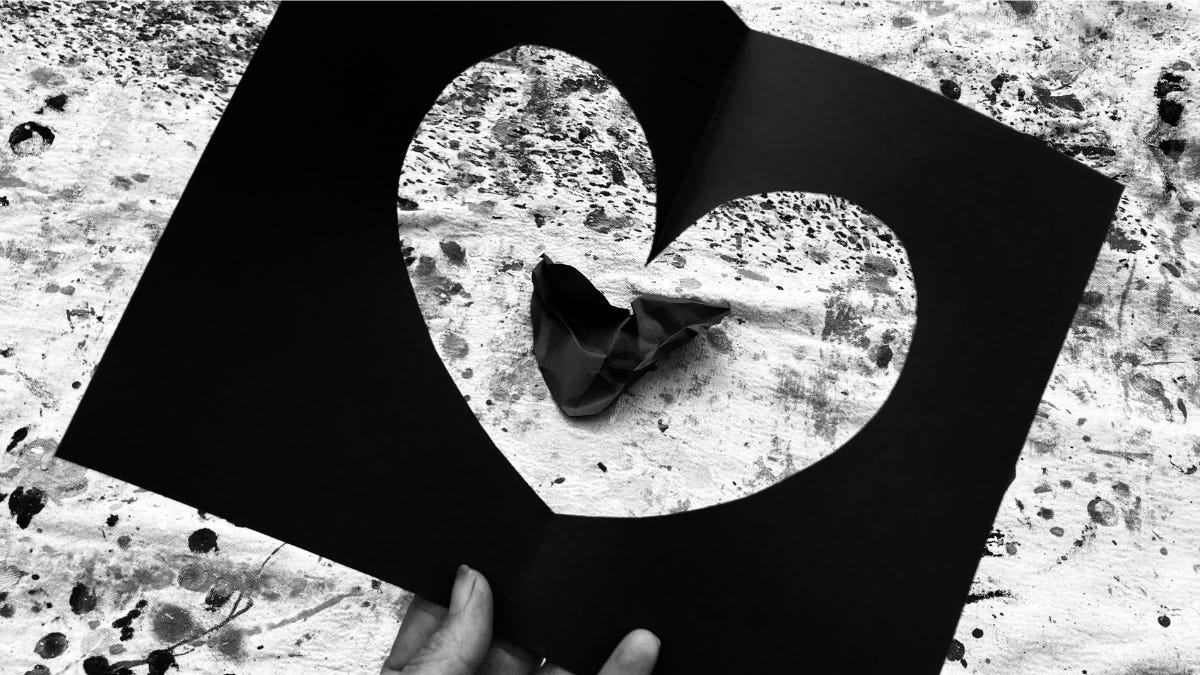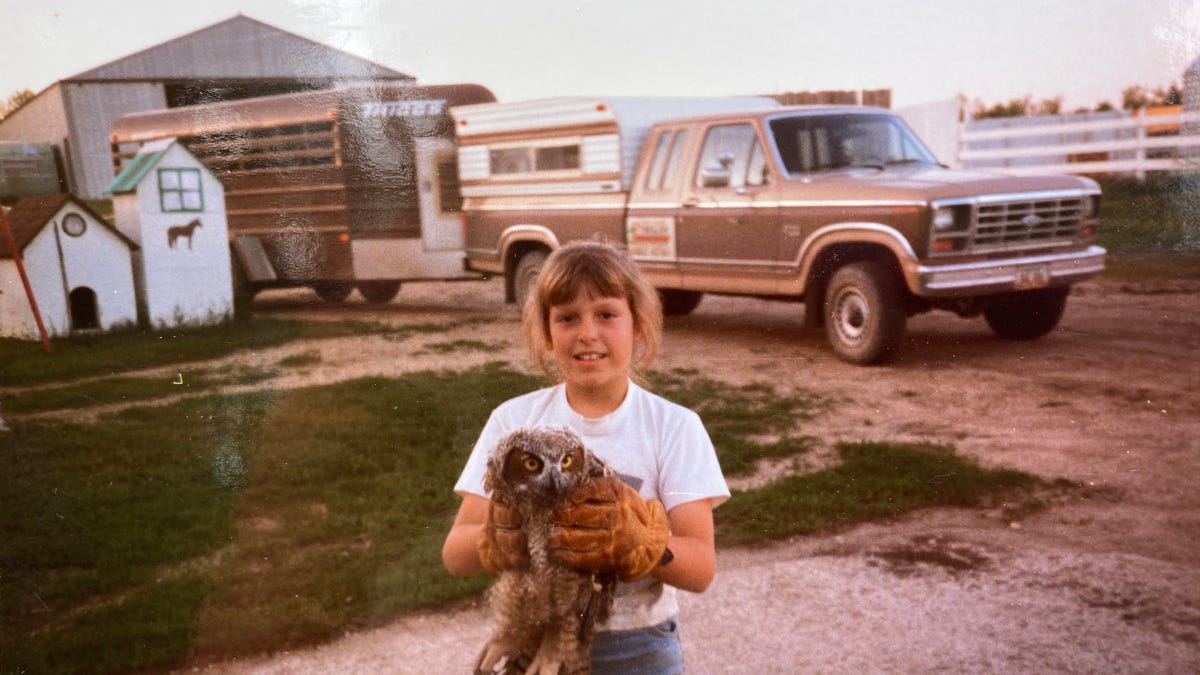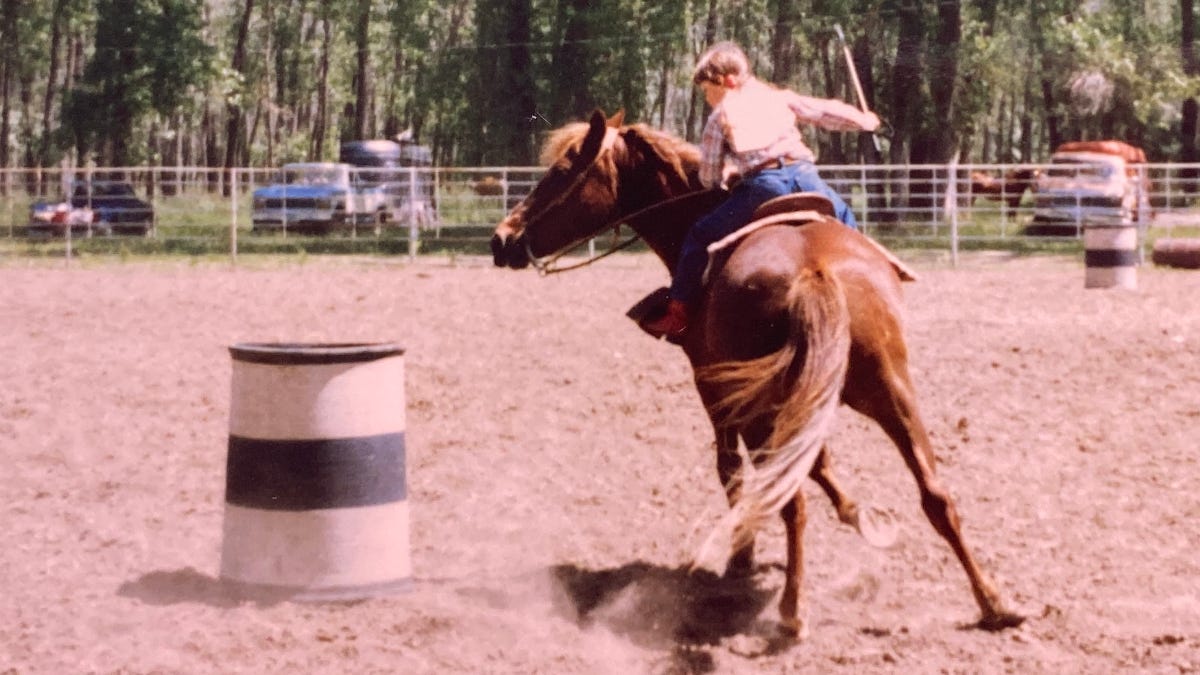Grounded (Art Memoir - Offering 2.1)
The roots of shame, silence, and a creative voice that wanted to be heard.
Welcome to Offering 2.1 of Eclosion: An Artist’s Path to Power and Peace. This week, we move into the Grounded phase—three early chapters where childhood impressions, cultural silence, and unexpected encounters with clay begin to shape (and shake) my sense of self as an artist.
These are the roots I tried to hide. But they’re where everything began.
Negative Space
My daughter Seren (pronounced like serenity) carefully folds a piece of paper in half and draws half a heart on it. As she begins to cut, a memory surfaces and I am transported to my own kindergarten class, making a similar heart. It was on a full sheet of red construction paper. I folded it in half so carefully, and drew half of a big, fat heart. After cutting it, I pulled the heart out and set it aside, then unfolded the paper, revealing the perfect image of a heart in the remnants. My own heart warm with pride, I held it up, marveling in how what was left—what I much later learned to call the negative space—could be so beautiful. When the teacher came around, a substitute, I gave her the paper with the heart cut-out as a gift.
She took it, looked at it askance, and asked “Why are you giving me garbage as a gift?”
She then crumpled it up and threw it in the trash.
My own heart crushed as heat rushed to my face, transforming from pride to shame in a single beat. Something I made and thought beautiful was rejected. It wasn’t good enough. That moment shaped my self-view for years—an authority figure telling me that my art, my heart, something I found so beautiful and amazing, was trash.
Fast forward to my first art class in middle school. I sat next to a boy, let’s call him the Eagle. We became friends in that strange middle school way where he picked on me and we joked around and had fun, sometimes with a bit of pain. It was the ‘80s and I had zippers on the back of my jeans. A poorly aimed kick by the Eagle, meant to trip me, ended with a cut on the back of my ankle as those fashionable zippers pierced my skin.
In art class, we learned about shading, values, and perspective. One assignment was to make a composition that included some of those aspects. I made a strange figure out of shapes and drew a curling ribbon all around it, delighting in following the curve of the ribbon and my curiosity. Our teacher decided to critique these drawings in front of the class. The only thing I remember when he talked about mine was him saying that it was “too balanced.” This very mild critique hit me like a lightning bolt of shame. What I heard was, “Who are you to think you can make art? You aren’t good enough.”
Not long after, we had the assignment of picking a photo from a magazine and painting it. It was our first painting assignment. I picked a lovely sunset over water scene, but before I started that painting, I got ‘sick.’ My stomach clenched in knots over the fear that I wouldn’t be able to paint that scene, I stayed home and missed the first few days of painting. When I returned to class, my teacher said that since I missed so much school, I didn’t have to do the painting. I inhaled deeply in relief, feeling my stomach relax. Relieved that I wouldn’t have to be embarrassed in front of the class again for failing, I ignored the tiny voice telling me how much I wanted to paint.
Looking back, I can see that my art wasn’t supposed to be any good. I’d never painted before. Somehow, I had this expectation of myself that I had to be good at something from the very beginning. This inability to be a beginner haunted me for years.
Years later, during a visit to my dad's house, I rediscovered a folder of my artwork from that class. Contrary to my memories of poor quality, the drawings, despite some mistakes in perspective, showcased impressive skill for a beginner. It was a revelation: I was an artist all along. I just couldn’t see it.
If for so long, I felt like I wasn’t good enough to be an artist, how did I get where I am today—a successful artist, able to support myself and my family with my art? As all journeys worth taking are, this one was long and winding, and it started with clay. I had an artsy boyfriend in college who saw my creative potential. With his encouragement I ended up taking a ceramics class. I enjoyed working with clay, building with my hands, but it wasn’t until I took a wheel-throwing class that I was hooked. Throwing pots came easily to me. I loved how earthy and malleable clay was. And my very practical German-from-Russia, North Dakotan ancestry loved that I could make something beautiful that was also useful.
Clay was the gateway drug into art for me. When a ceramics teacher would only let me continue working in the ceramics studio if I agreed to take his drawing and painting classes, I relented and signed up, even though I was certain whatever I made was going to suck. It was the only way for me to keep working in the studio. I surprised myself by enjoying drawing, and especially painting. I turned the garage of my rental house into a painting studio and continued painting after I graduated.
Silent Roots
When I was young, I didn’t know that it was possible to be an artist. At least not for people like me. I grew up in rural, conservative North Dakota, where I was loved and always had enough to eat and a roof over my head. While we didn’t buy top of the line goods, often shopping at Kmart, I rarely wanted for things. I even got name brand clothes from time to time, especially when my mom worked at Dayton’s department store. I was so proud to wear my coveted orange BUM sweatshirt when I started middle school.
It’s not that my family didn’t want to look good—on the contrary, appearance was very important. But common sense and practicality were our guiding values. Art, like name brand clothes, was superfluous. Not practical. Not utilitarian. I knew lots of people who made things with their hands—my entire family was endlessly creative, though they wouldn’t have said so themselves—but no one I knew was a professional artist.
As a kid, none of that mattered. I felt I had it all. We had a huge garden, and I reveled in the bliss of juicy, ripe strawberries exploding on my tongue and the crunch of asparagus as I ate them fresh from the garden. Playing in the hayloft with newborn kittens was endlessly entertaining. I even lived the dream of so many children—I had a horse. Horses were a huge part of my childhood and of connecting with my family, especially my dad and older sister. Nothing could compare to the freedom and power of riding my horse across the endless prairie, or the excitement of getting a killer time barrel racing at our local horse shows.
In many ways, my childhood was amazing. I was a happy kid—happiest playing outside and in nature with my family or a few friends. While my family didn’t talk much, they could be playful, especially outdoors where there was no TV to distract us. But while I felt at home out of doors and with family, I was shy around new people, and unable to access my emotions. The inability to access my emotions came from my family. We were a family of doers, not feelers. We didn’t talk about… well, I was going to say our feelings, but really, we didn’t talk much at all. At dinner we sat in front of the TV watching Star Trek or Wheel of Fortune instead of talking with one another about our days.
This silence wasn’t limited to my immediate family. It was generational. At family gatherings at my grandparents’ farm, us kids ran all over the Farm like a pack of wild animals, getting into all kinds of mischief. When hands were busy, whether working the farm, riding dirt bikes, or playing cards, there was an easy banter between us all. But when we just went for a visit, without a project to work on, there was often silence. Silence until someone said the inevitable, “Well, I suppose…” and made a move toward the door. Then suddenly the conversation would start, and we’d spend half an hour catching up as we stood in the small entryway off the kitchen, hot in our coats.
It was during my childhood—growing up on the North Dakota prairie, running wild on the Farm, my dad pointing out shooting stars or the northern lights in the night sky, racing my horse bareback across the prairie—that I fell in love with the natural world. One of my happiest memories is of a fishing trip to Wyoming’s Bighorn Mountains with my dad. Just the two of us went to visit my uncle and cousin, while my mom and older brother and sister stayed with family after a wedding we attended in Billings, Montana.
Dad and I spent two days up in the mountains, my cousin and I jumping from rock to rock in the mountain streams, leaning out over massive boulders to find the best pools where the rainbow trout were hiding, falling in repeatedly. We drank the crystal clear, cold stream water, something we didn’t have in North Dakota, where the rivers and streams were dark, filled with silt turned up from the muddy bottoms. In the evening, after eating fresh fish and cookies for dinner, I threw up that unfiltered stream water. Even my upset tummy didn’t detract from the magic of that trip.
Generational Echoes
When something was bothering me, I didn’t know how to tell my parents. Especially if it wasn’t happening right then. When I was about ten years old, a yearling colt that I was helping to train broke his leg. The young horse was euthanized, crushing my dream that he would be my horse when he was old enough to ride. My entire family was sad and upset.
Around the one-year anniversary of his death my grief hit me unexpectedly. Dusty would have been two years old, and we would have begun training him to ride. I tried to talk to my dad about my feelings—crying and struggling to express my sadness to him, but he couldn’t understand. It had happened an entire year ago, after all.
This became a trend throughout my childhood and as a young adult. Whenever I would share something with my parents that I was struggling with, the response was always the same. “Stop worrying about it,” they'd say, without instructions on how to stop worrying. “Worrying won’t change it or make it any better… It could be worse... At least it’s not…” What I heard in those words was: suck it up, it’s not a big deal, it’s not important.
It took me years to realize that my feelings were being minimized. That, yes, things could be worse, often much worse, but even so, my feelings were real, and it was ok to have them. I’m not blaming my parents for this; they did the best they could, giving me more time, love, and affection than their parents had given them. I am grateful for this, and I follow suit, working to give my own child more than they gave me.
There’s a quote I once heard: “My grandfather was a farmer so that my father could be a carpenter and I could be an artist.” In my case, that is literally what happened, although I think my father would have preferred that I stayed home and taken over his house-building business rather than moving out west and becoming an artist. Still, we do the best that we can for our children, trying to give them what our parents couldn’t give us. I know that when my child is grown, she will find things that I was unable to give her. I hope she will continue this legacy of striving to do better for the next generation than her parents could do for her.
Want to go deeper into this unfolding? Check out the memoir’s first Artful Invitation.
Invitation: The Art of What Remains
This invitation follows the chapter in Grounded called Negative Space. Read it here.





